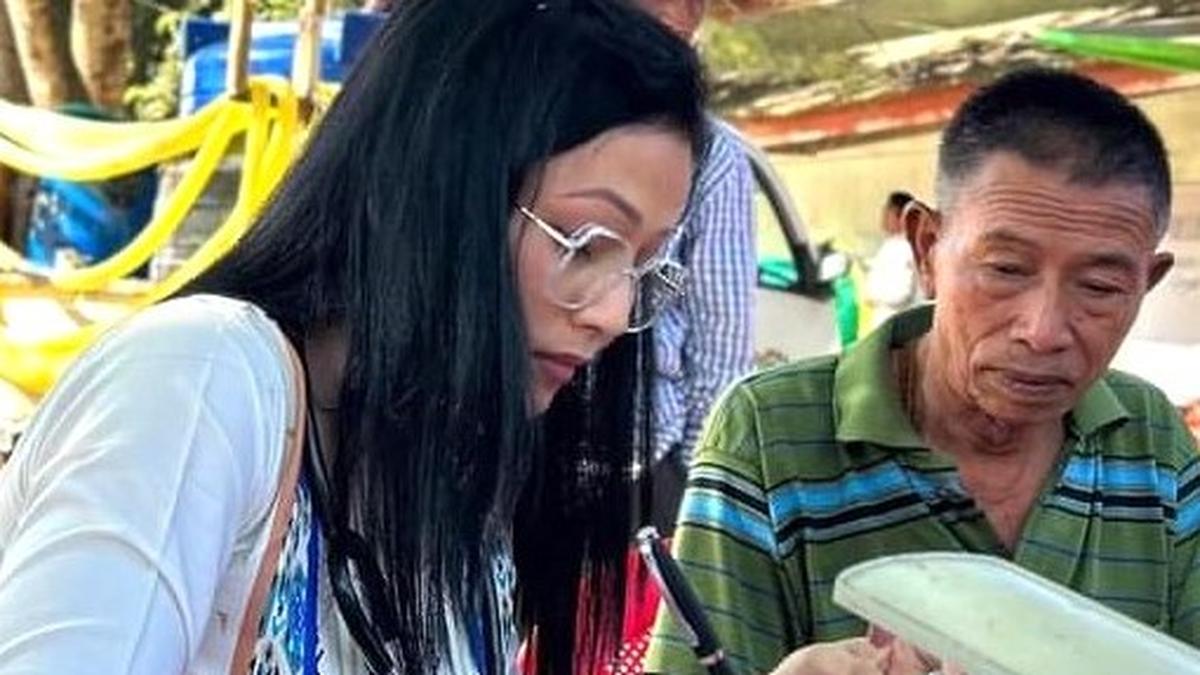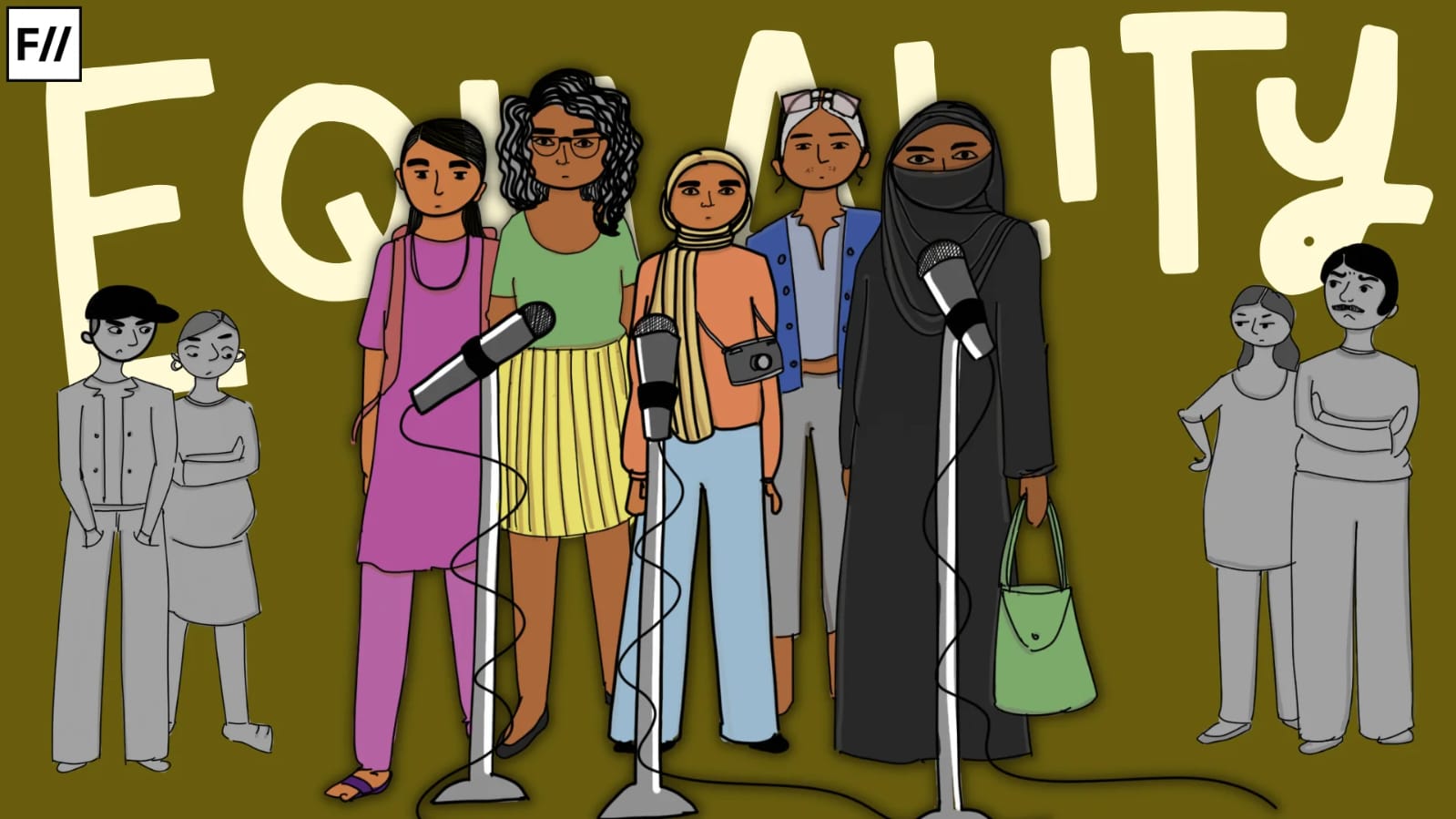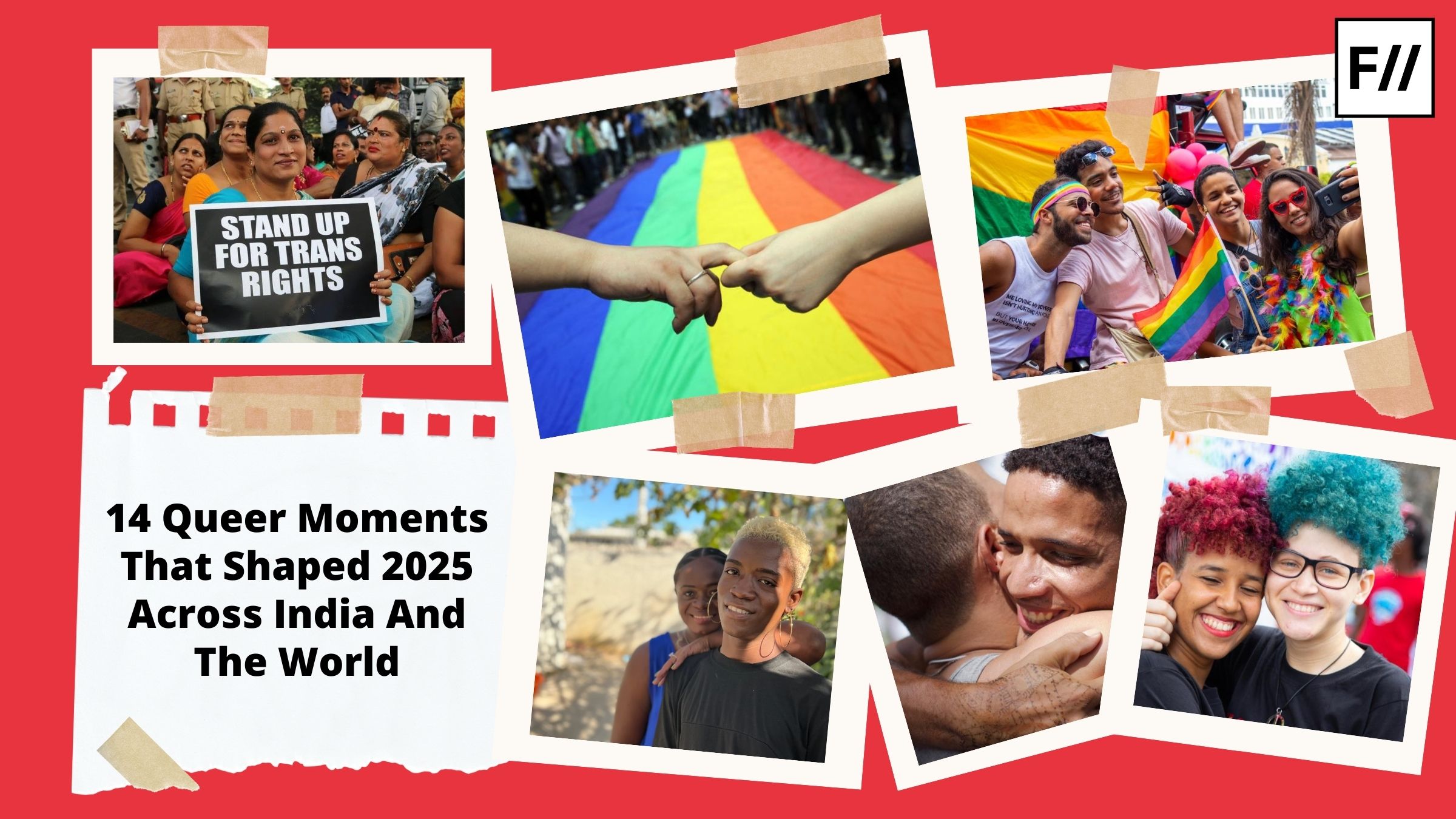Transgender people in India continue to face immense harassment, prejudice, and discrimination, both in social and institutional settings. Even something as basic as having their accurate gender identity reflected in documentation is an uphill battle marred with bureaucratic red tape, policy inconsistencies, and institutional apathy. Not only does this subject transgender persons to a long, arduous process to access rights already guaranteed to them, but it can also carry grave implications for their safety and can cause opportunity loss and exacerbate economic inequalities.
However, a recent Manipur High Court verdict allowing the state’s first transgender doctor to update her academic records to reflect her accurate name and gender identity has been a significant step in reaffirming the right of transgender persons to have their official records and documentation align with their accurate name and gender identity. While legislation exists to this effect, implementation leaves much to be desired. This was Dr Beoncy Laishram’s experience as well, which pushed her to seek judicial intervention.
After transitioning, Dr Laishram got her government-issued identification updated to state her correct name and gender identity. However, her request to update her academic records was denied by the relevant authorities. Following this, in February 2024, she approached the state’s High Court to challenge this.
A recent Manipur High Court verdict allowed the state’s first transgender doctor to update her academic records to reflect her accurate name and gender identity has been a significant step in reaffirming the right of transgender persons to have their official records and documentation align with their accurate name and gender identity.
On 19th August 2025, the Manipur High Court passed an order directing the state’s education department, the Board of Secondary Education Manipur, the Council of Higher Secondary Education Manipur, Manipur University, and the Manipur Medical Council to update Dr Laishram’s records as per her request.
While Dr Laishram’s legal victory is significant because it reaffirms the right to self-perceived gender identity for transgender persons, it also brings to the fore numerous failings in bridging the gap between legislative measures and institutional practices, as well as the fact that the landscape of trans rights in the country remains marred with red tape, non-standardisation of institutional practices, and rights violations.
Despite the law
While on paper, the Transgender Persons (Protection of Rights) Act, 2019, ostensibly secures the rights of transgender persons and protects them against discrimination, the gulf between such legal provisions and de facto practices is alarmingly wide. The Act includes provisions for recognising self-perceived identity and updating official documents to reflect it, and for the issuance of Transgender IDs, among other protections. However, these provisions are neither consistently nor easily implemented.
Santa Khurai, the secretary of All Manipur Nupi Maanbi Association (AMANA), is a trans feminist who worked closely with Dr Laishram during her legal battle. Shedding light on the inconsistencies that plague the process of obtaining certificates and updating documents, she told FII, “Many transgender people obtain a valid Trans ID and certificates issued by the District Magistrate/Deputy Commissioner. However, most government departments and institutions fail to recognise these documents. The gender markers in various documents are inconsistent as well. For instance, in passports, the gender marker for transpersons is “X”, and in the Aadhar, Voter ID, and PAN, it is “T”/”TG”. Due to such inconsistencies, the community faces humongous challenges in proving that these documents belong to the same individual. Judicial intervention then becomes the last resort.“
Such inconsistencies aren’t the only issue at play, either. Transphobia and narrow, uninformed ideas about trans identity also make the process a challenge to navigate. Speaking to FII, Fateh*, a non-binary, transman who engages in anti-caste, decolonial, trans-queer advocacy, said, “I have heard innumerable stories of people being made to wait for months for their TG IDs, and the very involvement of the DM for getting one’s application approved is plain dehumanising. This surveillance by the state and the power it holds to legitimise my existence is what keeps me from undergoing this process at all. Further, the state’s idea of transgender is so cisgenderist, one can be deemed “not trans enough” if their experience challenges the stereotypes the state’s narratives have laced trans lives in.“
While the Act allows transgender persons the right to self-perceived gender, i.e, they can self-identify with whatever gender label accurately reflects their gender identity and have a certificate issued accordingly, the process isn’t as straightforward in practice.
“Changing your gender from male to female in government IDs is a difficult process, requiring you to first change your gender to ‘transgender’ and then to ‘female’. For the latter part, one needs to mandatorily provide documents related to their gender reassignment surgery, but once you do, the process is still time-consuming, and you won’t be issued the certificate easily. It took me three months for the certificate to be issued, and I had to always be available to provide them with any documents they demanded. It was a difficult process,” Dr Laishram told FII.
The Act, it is evident, promises a lot more than it delivers, or perhaps than it ever intended to deliver, given the lack of state action in addressing these gaps. The Act is little more than progressive posturing, allowing the state to claim it affirms trans identity and backs trans rights, while doing nothing to address the challenges that transgender persons face in accessing the rights guaranteed to them. Fateh noted, “I don’t think these provisions’ intended effect is combating discrimination of trans folks at all – it all seems like mere tokenism to posit the Hindu nation as trans affirmative, to appropriate a more radical trans movement by silencing voices through a so-called Trans legislation. Neither does the act intend to prevent discrimination, nor does it have that impact.“
Safety implications of misgendering in official records
Denial of updated IDs carries grave safety implications for transgender persons. This is especially true of spaces where segregation occurs based on gender. Official records carrying incorrect gender labels will mean trans persons can be forced into the wrong gendered spaces, making them more vulnerable to bullying, harassment, and violence.
Transgender persons already face heightened levels of harassment and violence. Access to gendered spaces like hostels, PGs, and public transportation is essential for trans persons to navigate public spaces with more safety, especially in the case of trans women, who are more vulnerable to violence due to a combination of hypervisibility and misogyny.
While accurate gender identity reflected in documentation won’t remedy all the safety risks trans persons face, it can at least minimise some risks associated with gendered spaces by enabling them access to segregated spaces like hostels and PGs that align with their gender identity. Dr Laishram told FII that her legal victory was especially important because it will now enable her to pursue her higher education without the risk of being coerced into residing in a boy’s hostel. She said, “As a woman, I am not comfortable sharing a room with men. When separate hostels are being provided for men and women, why should I have to stay in the boys’ hostel?“
Santa Khurai noted, “If a person’s gender identity and expression are not in congruence with official documents, the person would definitely face an unbearable amount of harassment, ill treatment, and abuses, which can not only deprive them from seeking opportunities but can also pose a suicide risk.“
Although access to appropriate segregated gendered spaces alone cannot diminish all the risks transgender persons face. Firstly, these spaces reinforce a binary view of gender, without addressing the need for more trans-inclusive spaces. Secondly, even if access to gendered spaces corresponding with their correct gender identity is ensured for transgender persons, this doesn’t eradicate the risk of violence and harassment. The question of safety for trans persons is a broader systemic issue that requires public re-education, improved policy and legislative measures, and the creation of trans-inclusive infrastructure.
Highlighting the importance of inclusive spaces in increasing safety, Santa Khurai added, “However, these issues are not just about misgendering in documentation, but also about the lack of trans inclusive facilities in these institutions.” Fateh notes similar shortcomings stemming from a rigid binary view of gender, stating, “For hostels/PGs/public transport/washrooms, the ID makes no sense because these spaces are binary coded to an extent that an updated documentation would make no difference.“
Economic considerations and opportunity loss
Misgendering in official records also carries great economic costs. Inconsistencies in identity markers in various official documentation and a lack of standardisation can mean trans people cannot access various opportunities. Discussing this, Santa Khurai said, “When the state and central government do not include ‘T’/’TG’ option in job recruitment, and other opportunities, it forces trans people to choose either ‘male’ or ‘female’ categories. This is the primary reason why many trans men who work in the fields of sports and policing in Manipur hesitate to update their preferred gender marker in official documents because they fear losing their jobs.“
These issues don’t just manifest in workplaces, but even in accessing education and healthcare, which jeopardises trans persons’ access to formal work in the future. Santa Khurai spoke of one such instance, “A Manipuri trans woman pursuing a PhD in chemistry updated her Aadhar card to reflect ‘TG’, but her other documents still mentioned her sex as ‘male’. Recently, she applied for GRF and scored higher marks than the cut-off required for trans candidates. Despite this, she was not selected. When she followed up with the central authority over calls and emails, she received no response.“
Even Dr Laishram faced such challenges. Santa Khurai, who has supported her throughout this journey, said, “Dr Laishram’s applications were rejected so many times due to the inconsistency of gender markers and current appearance that doesn’t match with her old photographs. Going to court was her last resort.“
Speaking of the implications of misgendering in academic records, Fateh says, “It is really traumatising, triggering and humiliating to not have my name and gender changed on the university rolls just because my legal name and gender haven’t been changed. The institutions are merciless, trans students and faculty alike – despite mobilising over this concern – continue to make do with being actively misgendered by paperwork and technical systems (institutional email ids, ID cards).“
These issues are even more critical when viewed alongside the fact that transgender persons face disproportionate levels of poverty, with a significant portion of the country’s trans population working in the informal sector or in low-paid jobs. Further, transphobia informs hiring decisions and workplace environments, which not only keep trans persons outside the formal workforce but also subject them to harassment and discrimination if and when they enter it.
Dr Laishram’s legal win not only sets an important precedent in reaffirming trans rights but is also a step in bridging the gap between statutory provisions and institutional practices.
Even in the absence of red-tapism and misgendering on IDs, transgender persons already face barriers in accessing education and jobs, but the state’s inability to at least standardise its own processes and dismantle bureaucratic barriers only exacerbates an already grim issue.
Dr Laishram’s legal win not only sets an important precedent in reaffirming trans rights but is also a step in bridging the gap between statutory provisions and institutional practices. However, a pertinent question that needs to be asked is why Dr Laishram had to go to court at all to secure what should have been a basic right. Requiring legal intervention for the state to recognise trans identities is yet another barrier contributing to the structural disadvantages transgender persons already face.
Santa Khurai noted, “If transpersons have to go to court to prove the validity of their documents, what purpose does the Transgender Persons (Protection of Rights) Act 2019 and Rule 2020 serve? 99% of trans people are not well literate or informed about such legislation, then, expecting every trans person to pursue legal action is essentially to pass a law in our favour and use the same law against us.“
Highlighting the importance of accurate gender markers in documentation, she added, “Having preferred gender markers in official documents gives trans persons hope, pride, and empowerment. It brings emotional strength that alleviates self-doubt, low self-esteem and builds confidence. It is not a mere legality; it holds immense power, and power can drive positive change.“
*Some names in this article have been changed to protect the privacy of individuals. Quotes have been edited for clarity and length.
About the author(s)





Nothing is impossible; there are ways that lead to everything, and if we had sufficient will we should always have sufficient means. we wish you !!!!! from Cab in Kerala taxi service